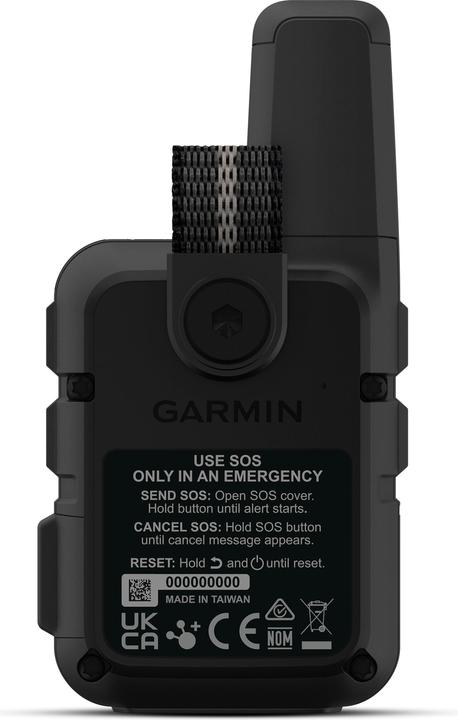

Last year the Garmin InReach helped many hikers in emergency situations
The Garmin InReach is often used in outdoor activities, on expeditions, on the high seas and for mountain sports. It’s a GPS device that can send out emergency signals via satellite. The new Garmin InReach Report 2023 shows how people used the SOS message service last year.
It can all happen very quickly. The weather turns and you can’t see very far. You trip up and injure yourself at the same time. What was meant to be a weekend adventure soon turns into an emergency. These kind of accidents tend to happen in regions where there’s no cell phone reception. Or when your phone battery’s died. After all, its usually multiple accidents or mistakes that lead up to an emergency. In other words, taking the wrong turn whilst hiking only becomes an issue when the return journey isn’t safe and the usual means of communication fail. In the worst-case scenario, injuries, harsh environmental conditions and other life-threatening circumstances get thrown into the mix.
How the Garmin InReach can help in emergencies
This is where the Garmin InReach Mini2 or its predecessors come into play. They’re connected to the Iridium satellite network which, according to the manufacturer, provides worldwide coverage via 66 active satellites. This allows you to send and receive SMS messages without a mobile network connection. The location is determined with Multi-GNSS using three satellite systems: GPS, Galileo and QZSS. According to the manufacturer, the battery lasts up to 100 hours in standard mode and up to 30 days in energy-saving mode.

In an emergency, you can press the SOS button, which alerts a 24/7 rescue centre. The message is sent as a short message and also passes on your location. Any emergency contacts that have been stored on the device are also informed. You can stay in contact with the emergency services by text message and share details about the type of accident, number of casualties and other details. The Garmin emergency service communicates in around 210 languages and dialects. However, for this service you need to pay a subscription.
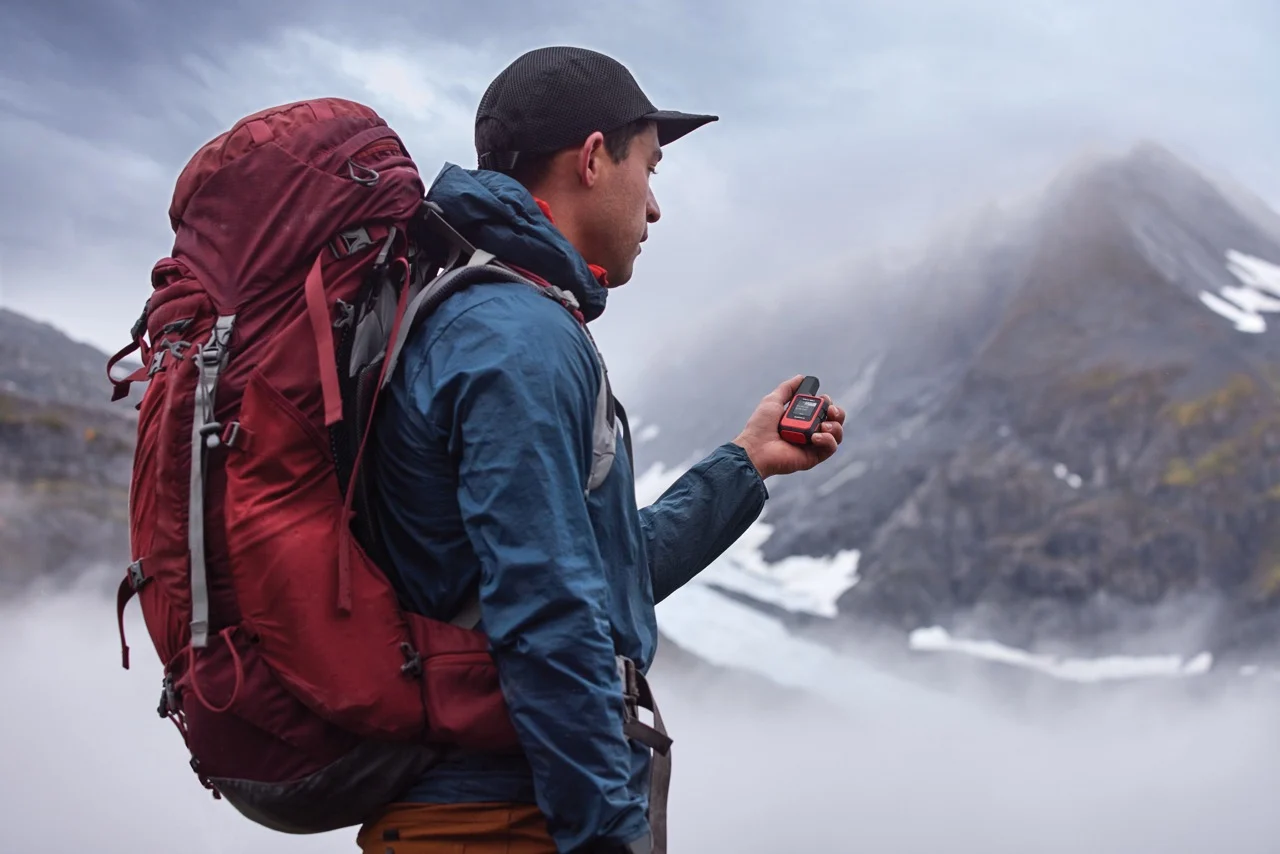
Source: Garmin
You can also use the Garmin InReach Mini2 for navigation, connect it to your smartphone or use it to send SMS messages – even if you have no mobile phone reception. For example, to let family or friends know that you’re running late but everything else is fine.
However, the real advantage is the SOS function and two-way communication with emergency services via SMS. As the recently published report shows, this was used again last year in a variety of scenarios.
The majority of emergency calls were necessary for hiking and trekking accidents
Since the launch of Garmin’s InReach product line in 2011, more than 10,000 emergency calls have been recorded. However, the manufacturer was unable to provide the figures for last year on request.
Around 40 per cent of the emergency signals in 2023 came from hikers who were on one-day or multi-day tours. This was followed by car and motorcycle accidents, which recorded the largest increase compared to the previous year. Slightly less frequent were boat accidents, with climbing and mountaineering following just after. According to the Garmin report, emergency situations since 2011 have ranged from plane crashes to encounters with grizzly bears, sinking sailboats, injured mountaineers and skiers caught in avalanches.
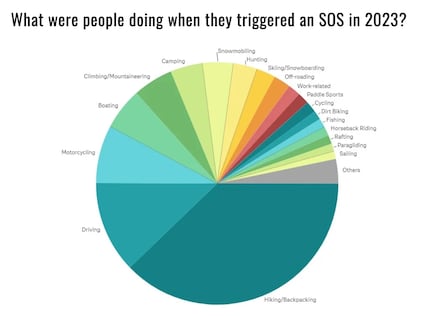
Source: Garmin
Unfortunately, the manufacturer was unable to provide a regional breakdown of the geographical data. However, a picture included in the report suggests that the majority of emergencies occur on the US West Coast with its extensive nature. The mountain regions of Europe as well as Australia and New Zealand are hotspots for emergencies too.
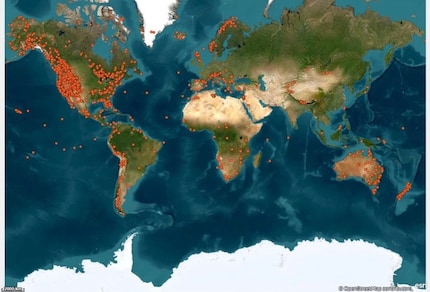
Source: Garmin
The most common reason for emergency calls was injuries. According to Garmin, they ranged from broken bones and cuts to extensive impact trauma. Vehicle problems was the second most common reason for an emergency call. Here it was predominantly people who had broken down and were stranded in deserted areas. Another common case for emergency calls was illness, ranging from altitude sickness and heart problems to severe gastrointestinal problems.
Also useful for saving others
While many people travelling alone carry their own GPS devices with an emergency call function, they’ve also often been used to help others in distress. More than half of the rescues involved groups and third-party individuals.
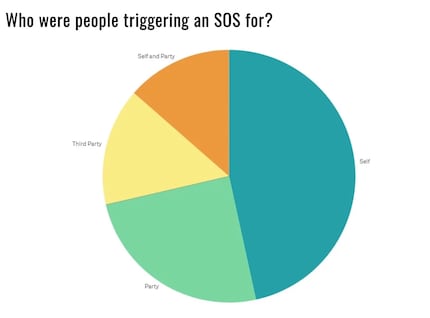
Source: Garmin
A helicopter had to come to the rescue in around a third of cases last year. This was also the case, for example, in a hiking accident on icy trails on Mount Baldy in California after a female hiker suffered serious injuries in a fall. The company blog describes how her friends were able to organise the rescue via a Garmin InReach.
Research diver, outdoor guide and SUP instructor – I love being in, on and around water. Lakes, rivers and the ocean are my playgrounds. For a change of perspective, I look at the world from above while trail running or flying drones.
Interesting facts about products, behind-the-scenes looks at manufacturers and deep-dives on interesting people.
Show all

